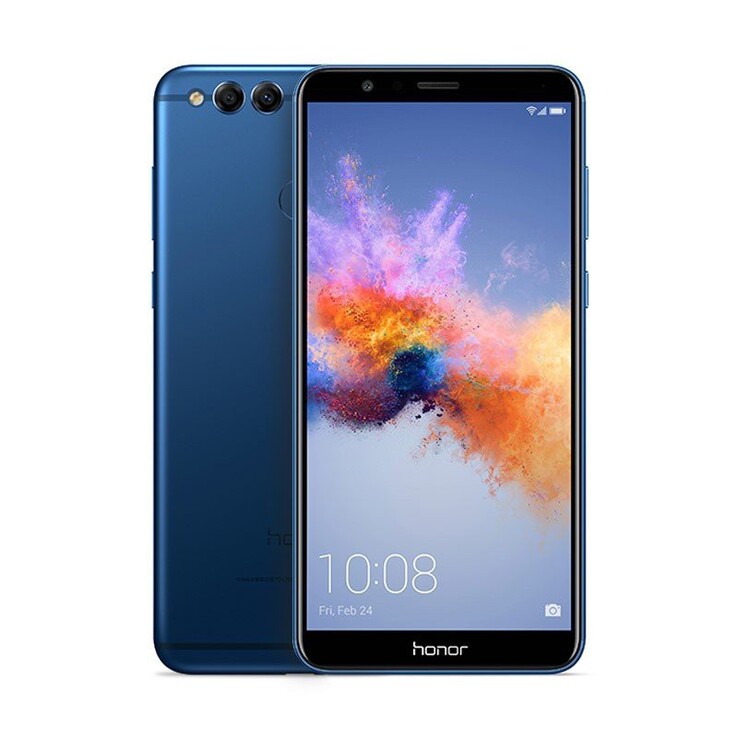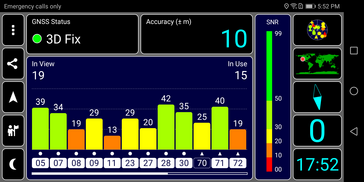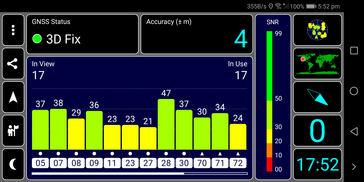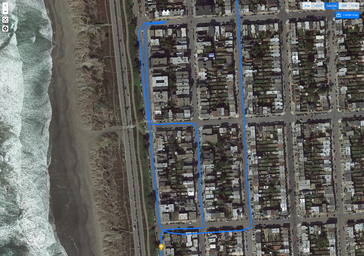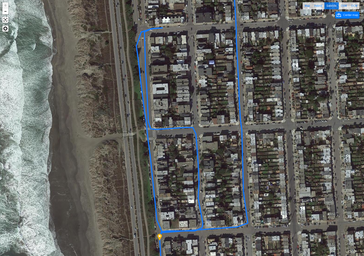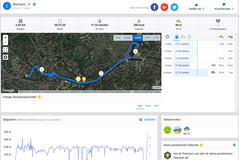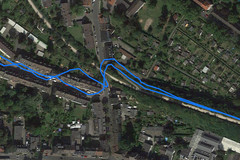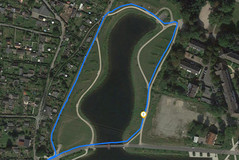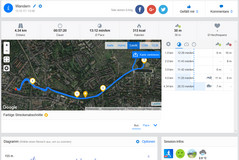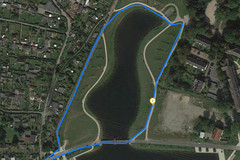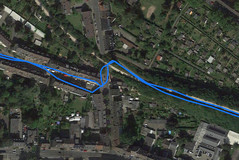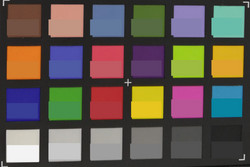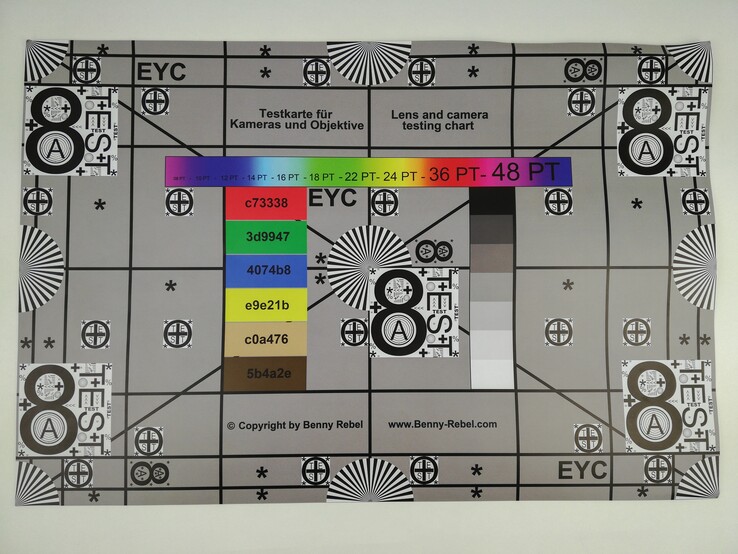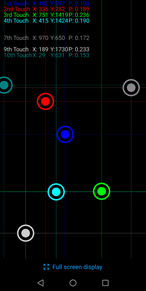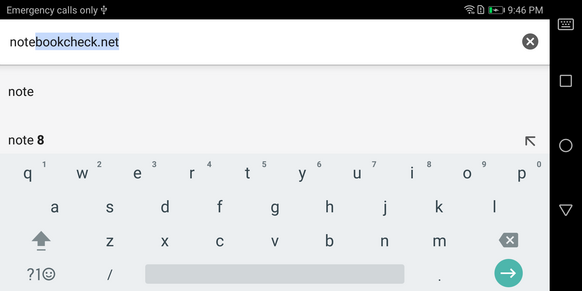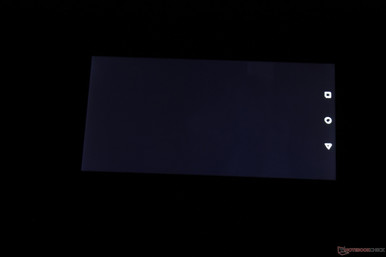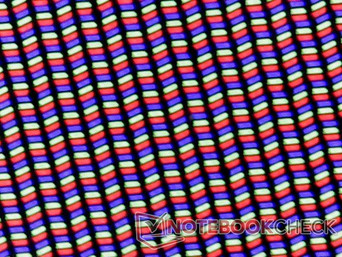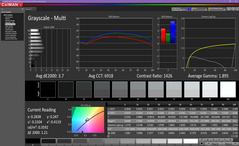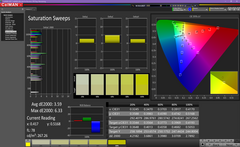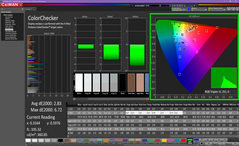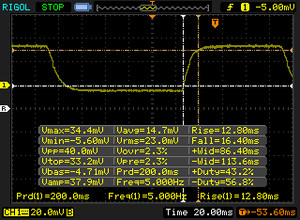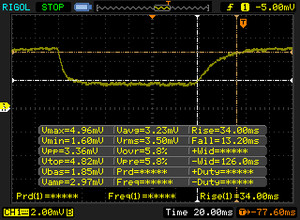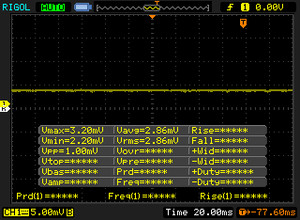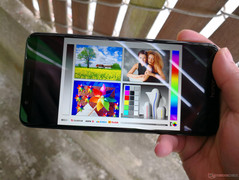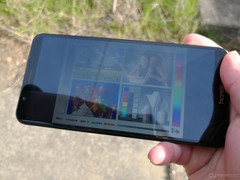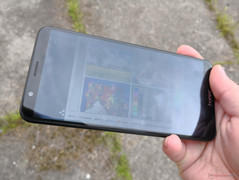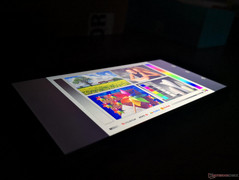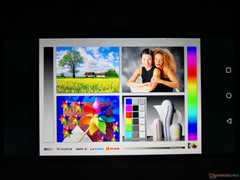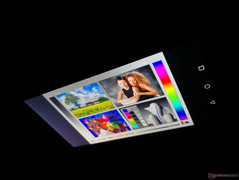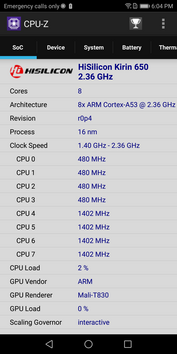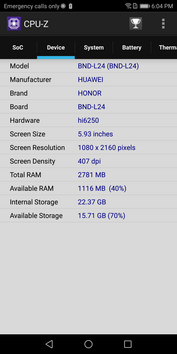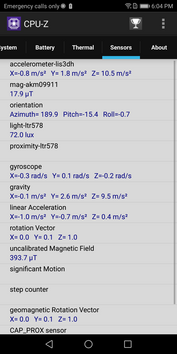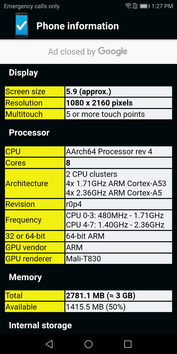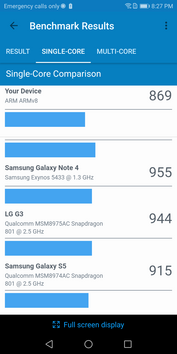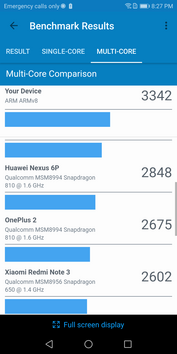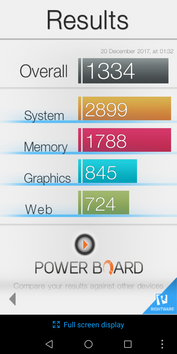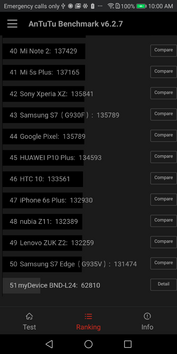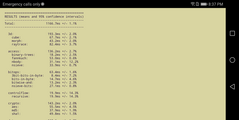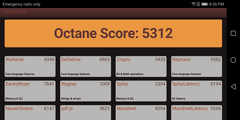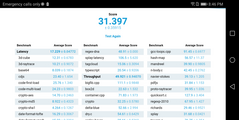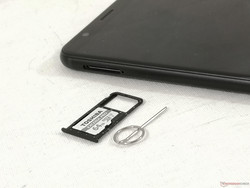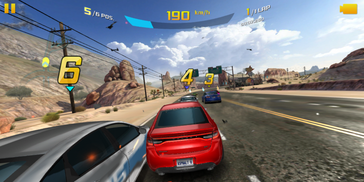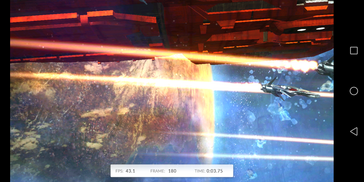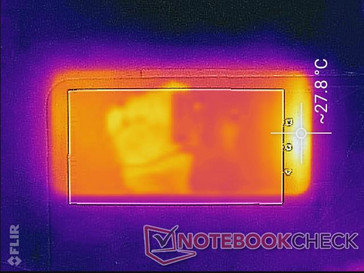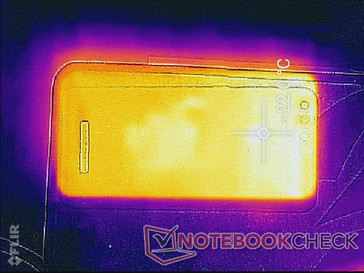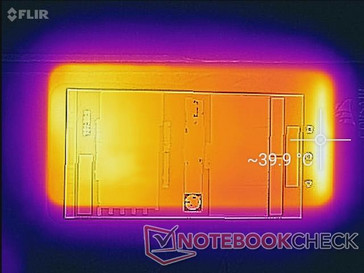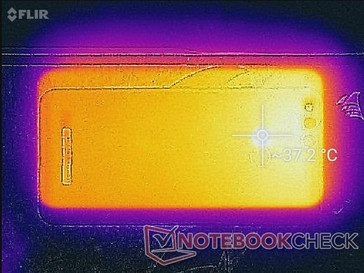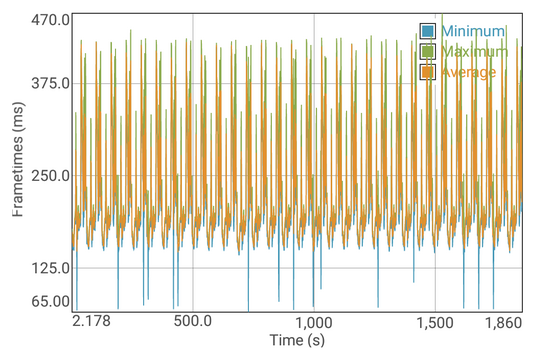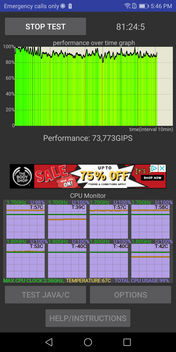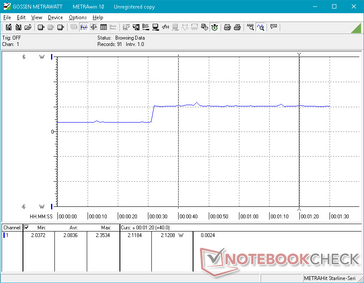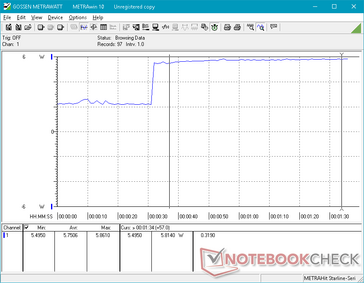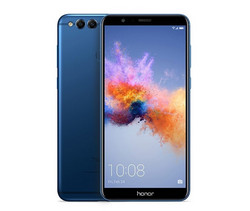Honor 7X Smartphone Review
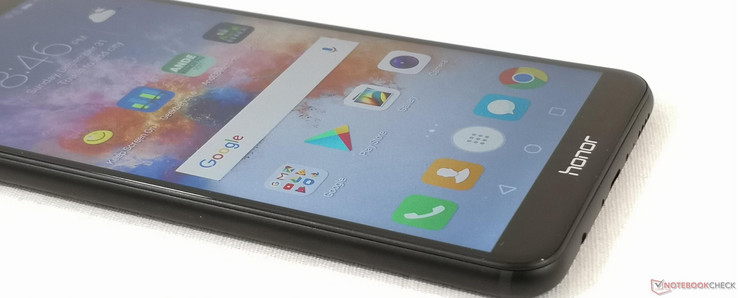
The Honor 7X prides itself in being one the most inexpensive Android smartphones with an 18:9 "FullView" display. As the first in the Honor series to ship with such an aspect ratio, it represents Huawei's attempt at offering a key feature found on costlier models like the Galaxy S8, LG G6, Google Pixel 2 XL, or Huawei's own Mate 10 Pro to the entry-level market. Even if users aren't drawn in by the roomy 6-inch display, its $200 USD MSRP is even more affordable than the $250 USD launch price of the outgoing Honor 6X while offering very nearly the same set of features.
Huawei is making available the Honor 7X in North America as well complete with all the necessary 4G LTE radios for compatibility with AT&T, T-Mobile, and other GSM networks. This alone gives the manufacturer a leg up against other Chinese smartphones that often lack the radios necessary for 4G or even 3G connectivity in the States. Up to three RAM and storage configurations will be available depending on region including 3 GB/32 GB, 4 GB/32 GB, and 4 GB/64 GB with our test model today being the entry level 3 GB/32 GB option.
As lucrative as a $200 18:9 smartphone may sound, it's normal to have reservations just based on the very low price alone. Can Huawei really deliver a competent Android smartphone at such a price point? What are the inevitable cut corners? We'll take a closer look at the Honor 7X to see how it compares to its immediate predecessor and other budget smartphones in its category. Competition in the $200 is plentiful especially in Asian and European territories including the BQ Aquaris V, Xiaomi Redmi 5A, Alcatel A3, Leagoo S8, and Nokia 5.
Update 01/12/2018: GPS and camera tests added.
Case
The Honor 7X is slightly longer than the outgoing Honor 6X and noticeably larger in length and width than the Honor 7 because of its elongated screen. To make up for its bigger footprint, Huawei has shaved off 0.8 mm in thickness compared to the already thin Honor 6X to be even thinner than the iPhone X (7.6 mm vs. 7.7 mm). It is subsequently very compact with a relatively high screen-to-body ratio of 82.9 percent and at nearly the same dimensions as the flagship Mate 10 Pro.
In terms of design and quality, the Honor 7X accentuates contoured edges and corners around a 2.5D screen in contrast to the sharper look of the Honor 7. Huawei says the chassis had gone through 28 iterative prototypes before finally settling on the current design and the end result is a smartphone that feels like a Honor 6X repurposed for an 18:9 form factor. The rounded metallic matte surfaces are thus more slippery to hold compared to boxier alternatives like an iPhone 8 or Xperia alternative. Attempting to twist the smartphone will result in visible warping but no creaking; Rigidity has not improved over the Honor 6X and it feels weaker than on the Honor 7. Both the center of the screen and back plating are otherwise firm and will not depress when applying pressure.
Blue, Black, and Gold color options are available with the latter excluded from the US market due to it unpopularity in the region.
Connectivity
Physical ports are limited to Micro-USB 2.0 and a 3.5 mm headphone jack both on the bottom edge. When questioned why the device does not integrate USB Type-C, Huawei claimed that the Micro-USB port is more reflective of the target price point. It's likely that we'll have to wait another generation or two in the Honor series before the manufacturer decides to make the jump to USB Type-C.
Communication and GPS
Wireless connectivity options include 2.4 GHz 802.11 b/g/n, Bluetooth 4.1, GPS, and the wide range of LTE FDD bands as listed on the official product page. Conspicuous omissions are NFC, 802.11ac, Wi-Fi calling, and an IR blaster likely due to cost constraints. The lack of NFC is particularly unfortunate as the feature is integrated onto the Honor 6X.
The Honor 7X supports the satellite networks GPS, Glonass, and BeiDou. The satellite fix was quick outdoors, but the accuracy could be a bit better.
We also compare the performance of the smartphone with the Garmin Edge 500 navigation device. The overall deviation is okay at 100 meters, but a closer look reveals that the location performance is not as accurate (sometimes a bit off-road) as on the specialized navigation device. The performance should still be sufficient for everyday navigation purposes.
| Networking | |
| iperf3 transmit AX12 | |
| Huawei Mate 10 Pro | |
| Huawei Mate 10 Pro | |
| Huawei Y7 | |
| Huawei Honor 7X | |
| iperf3 receive AX12 | |
| Huawei Mate 10 Pro | |
| Huawei Mate 10 Pro | |
| Huawei Y7 | |
| Huawei Honor 7X | |
Telephone and Call Quality
Call quality is clear when dialing into a landline on the other end. Volume could have been louder on the Huawei and the listener on the other side experienced periodic pauses in our voice despite having full reception. Generally, however, voice quality is acceptable so long as background or street noise can be kept to a minimum. Our call test was performed on T-Mobile and users on AT&T or others may not have the same experience.
Both nano-SIM slots are capable of connecting to 4G LTE networks whereas the secondary SIM slot on many other dual-SIM smartphones are limited to 2G or 3G only.
Cameras
The front camera of the Honor 7X has an 8 MP sensor with a fix focus. It features a selfie mode, which improves the picture quality with a soft filter. A gesture trigger is supposed to improve the handling. The picture quality is decent in good lighting conditions, but quickly drops in low-light situations and you can quickly see ugly artifacts.
The dual-camera system at the back has 16 + 2 MP (f/2.2) with an optical image stabilizer. The second lens enables a nice Bokeh for the portrait mode, which works well, but it cannot keep up with the solutions in more powerful devices like the iPhone X or the Pixel XL. The specs of the Honor 7X are identical to the Mate 10 Lite.
The picture quality of the Honor 7X is unfortunately just average and cannot fully convince even in daylight, because the pictures are not perfectly crisp. Instead, the picture always looks a bit washed-out with little details, especially compared to high-end rivals. However, you won't notice any problems when you just look at the pictures on your smartphone display. Colors are a bit pale in low-light situations and the picture appears blurry, muddy, and not very pleasing overall. The auto focus is fast and focusses the picture within 895 ms in daylight and 1208 ms in low-light situations.
The Honor 7X records videos at up to Full-HD (1920 x 1080 pixels, 30 FPS), but the default setting is just 720p. The quality is decent, but the sound is always accompanied by a slight murmur.
We had another look at the Honor 7X's dual-camera under controlled lighting conditions. Our test chart shows that fine details cannot be captured, but the picture quality is otherwise decent. The sharpness is good compared to the real-life picture and there is juts a small drop towards the edges. Color transitions are also captured well and there is hardly any fraying even with dark fonts on dark backgrounds. However, there is quickly noise on the colored areas.
The colors are a bit too pale; only red hues are an exception and are comparatively saturated.
Accessories and Warranty
Included accessories are an AC adapter (US), micro-USB data cable, SIM key, and screen protector. There are no earbuds, cleaning cloths or protective cases as many other smartphones may throw in for free.
The standard one-year limited manufacturer warranty applies. Huawei allows free returns within a 15-day period if purchased directly from the official website.
Please see our Guarantees, Return Policies and Warranties FAQ for country-specific information.
Input Devices and Handling
The 10-point capacitive touchscreen is swift and responsive as one would expect it to be. Fast typists, for example, will be glad to know that the input delay is kept to a minimum even with moderate background activity. Accuracy is uniform from one corner to the other with the familiar Google Android keyboard layout.
The main issue for most users will be the sudden jump from a 16:9 display to the 18:9 display. The taller and narrower screen means that the onscreen keyboard is positioned lower than usual and the user's palms will need to adjust accordingly when in portrait mode. The shift in weight is more obvious and users must take care not to drop the smartphone whilst typing.
The physical Volume and Power buttons are firm with a satisfying and audible "click" when pressed. Double-clicking on the Volume "Down" button will initiate the camera in just 1.8 seconds for fast snapshots without needing to unlock the phone.
Lastly, the rear fingerprint sensor sensor promises a response time of just 0.25 seconds (compared to 0.3 seconds on the Honor 6X) and our own experience shows it be just as reliable as a Mate 10 Pro in practice. Fingerprints are still recognized when upside-down or sideways.
Display
A big draw of the Honor 7X is its 18:9 FHD (2160 x 1080) IPS display measuring almost 6 inches across. Smartphones with similar display specifications at this price range are still very uncommon and Huawei is capitalizing on this fact by appropriately marketing the 7X as an affordable "Fullview" Android device. Perhaps surprisingly, the manufacturer has mostly delivered with only a couple of cost-cutting measures to meet the price point. While contrast is very high at approximately 1500:1 and colors are better than on the Honor 6X, the backlight is not any brighter. The displays on some flagships like the Mate 10 Pro and iPhone X still have more powerful backlights reaching over 600 nits each.
A major drawback of the otherwise great display is its slow response times. At 12.8 ms black-to-white, this is significantly slower than on the Honor 6X (5 ms) and Huawei Y7 (3.6 ms). Smartphones with OLED panels like the Doogee Mix or Mate 10 Pro are even faster still. The consequence is more ghosting that we were able to notice subjectively during the first few minutes of boot up. Swiping across Android Home screen windows and scrolling vertical webpages, for example, are met with blurrier icons and texts. Fortunately, the ghosting is not significant enough to dramatically impact video playback as movies still look great on the device.
The backlight is relatively even across the edges and corners of the screen with just very minor bleeding across the top edge that is unnoticeable during everyday use. The screen is slightly grainier than expected from a glossy overlay when displaying all white at the maximum brightness setting. Fortunately, this is again not severe enough to be of any concern during use.
| |||||||||||||||||||||||||
Brightness Distribution: 88 %
Center on Battery: 533.2 cd/m²
Contrast: 1523:1 (Black: 0.35 cd/m²)
ΔE Color 2.83 | 0.5-29.43 Ø5
ΔE Greyscale 3.7 | 0.57-98 Ø5.3
Gamma: 1.9
| Huawei Honor 7X IPS, 5.93, 2160x1080 | Honor 6X abgerundetes 2,5D-Glas, IPS, 5.50, 1920x1080 | Honor 7 IPS, 5.20, 1920x1080 | Doogee Mix AMOLED, 5.50, 1280x720 | Huawei Y7 IPS, 5.50, 1280x720 | Huawei Mate 10 Pro FullView, HDR, OLED, 6.00, 2160x1080 | |
|---|---|---|---|---|---|---|
| Response Times | 16% | 86% | 6% | 86% | ||
| Response Time Grey 50% / Grey 80% * | 47.2 ? | 41 ? 13% | 5.6 ? 88% | 59.2 ? -25% | 6.4 ? 86% | |
| Response Time Black / White * | 29.2 ? | 24 ? 18% | 4.8 ? 84% | 18.4 ? 37% | 4.4 ? 85% | |
| PWM Frequency | 62.5 | 2315 ? | 247.5 | |||
| Screen | -33% | -11% | -36% | -12% | 28% | |
| Brightness middle | 533.2 | 547 3% | 442 -17% | 358 -33% | 467 -12% | 629 18% |
| Brightness | 511 | 540 6% | 440 -14% | 354 -31% | 456 -11% | 636 24% |
| Brightness Distribution | 88 | 94 7% | 92 5% | 90 2% | 92 5% | 94 7% |
| Black Level * | 0.35 | 0.57 -63% | 0.23 34% | 0.39 -11% | ||
| Contrast | 1523 | 960 -37% | 1922 26% | 1197 -21% | ||
| Colorchecker dE 2000 * | 2.83 | 5.1 -80% | 4.52 -60% | 4.9 -73% | 4.3 -52% | 1.7 40% |
| Colorchecker dE 2000 max. * | 6.72 | 9.1 -35% | 11.8 -76% | 6.8 -1% | 3.6 46% | |
| Greyscale dE 2000 * | 3.7 | 6.2 -68% | 5.47 -48% | 3.9 -5% | 3.5 5% | 2.4 35% |
| Gamma | 1.9 116% | 2.09 105% | 2.27 97% | 2.33 94% | 2.35 94% | 2.15 102% |
| CCT | 6918 94% | 6546 99% | 7874 83% | 7260 90% | 7273 89% | 6337 103% |
| Color Space (Percent of sRGB) | 99.7 | |||||
| Total Average (Program / Settings) | -9% /
-24% | -11% /
-11% | 25% /
-6% | -3% /
-9% | 57% /
43% |
* ... smaller is better
Further analyses with a X-Rite spectrophotometer reveal generally accurate grayscale and colors. Green and Blue are shown to be slightly less accurate than others and color temperature is slightly too cool, but the DeltaE is still better than other cheap Android smartphones like the Doogee Mix or Huawei Y7. The Mate 10 Pro, of course, exhibits even lower DeltaE values and a gamma closer to the sRGB standard.
Display Response Times
| ↔ Response Time Black to White | ||
|---|---|---|
| 29.2 ms ... rise ↗ and fall ↘ combined | ↗ 12.8 ms rise | |
| ↘ 16.4 ms fall | ||
| The screen shows relatively slow response rates in our tests and may be too slow for gamers. In comparison, all tested devices range from 0.1 (minimum) to 240 (maximum) ms. » 75 % of all devices are better. This means that the measured response time is worse than the average of all tested devices (21.5 ms). | ||
| ↔ Response Time 50% Grey to 80% Grey | ||
| 47.2 ms ... rise ↗ and fall ↘ combined | ↗ 34 ms rise | |
| ↘ 13.2 ms fall | ||
| The screen shows slow response rates in our tests and will be unsatisfactory for gamers. In comparison, all tested devices range from 0.2 (minimum) to 636 (maximum) ms. » 79 % of all devices are better. This means that the measured response time is worse than the average of all tested devices (33.7 ms). | ||
Screen Flickering / PWM (Pulse-Width Modulation)
| Screen flickering / PWM not detected | |||
In comparison: 53 % of all tested devices do not use PWM to dim the display. If PWM was detected, an average of 17900 (minimum: 5 - maximum: 3846000) Hz was measured. | |||
Outdoor visibility is very similar to that of the Honor 6X since backlight brightness has not changed. In other words, it's generally very good so long as the screen is not under direct sunlight as the glare will overwhelm texts and images. The wide viewing angles are able to reduce glare somewhat, but apparent brightness drops rather quickly even if viewing slightly off-centered for a noticeably dimmer screen.
Performance
The mid-range octa-core Kirin 659 is only a marginal improvement over the Kirin 655 in terms of performance. The rated clock rate for its main four cores is only 260 MHz faster (2.36 GHz vs. 2.1 GHz) with no major changes to the number of threads, fabrication size, or even the integrated Mali-T830 MP2 GPU. Both AnTuTu and 3DMark benchmarks confirm this as the Honor 7X is only about 10 to 15 percent above the Honor 6X in most cases. The Honor 7X also scores very similarly to Huawei's other budget offering - the Nova 2 - equipped with the same Kirin 659 SoC.
Although the performance gap when compared to the Honor 6X is somewhat disappointing, the in-house Huawei SoC is still measurably faster than Qualcomm's budget Snapdragon 400 series. The Huawei Y7, Honor 6A, and Motorola Moto G5s are each equipped with Snapdragon 400-class SoCs and they are all behind the Honor 7X by about 15 to 30 percent in GeekBench multi-core benchmarks. Budget MediaTek MT6750 SoCs found in very cheap Android smartphones are even slower.
See our dedicated page on the Kirin 659 for more technical information and benchmark comparisons.
| AnTuTu v6 - Total Score | |
| Apple iPhone X | |
| Huawei Mate 10 Pro | |
| HTC U11 | |
| Huawei Nova 2 | |
| Huawei Honor 7X | |
| Honor 6X | |
| Motorola Moto G5s | |
| Honor 6A | |
| Huawei Y7 | |
| Bluboo S8 | |
| Leagoo Kiicaa Mix | |
| Huawei Y6 Pro 2017 | |
| Geekbench 4.4 | |
| Compute Metal Score 4.4 | |
| Apple iPhone X | |
| Compute RenderScript Score | |
| Huawei Mate 10 Pro | |
| HTC U11 | |
| Huawei Nova 2 | |
| Huawei Honor 7X | |
| Huawei Y7 | |
| Motorola Moto G5s | |
| Leagoo Kiicaa Mix | |
| Bluboo S8 | |
| 64 Bit Multi-Core Score | |
| Apple iPhone X | |
| Huawei Mate 10 Pro | |
| HTC U11 | |
| Huawei Nova 2 | |
| Huawei Honor 7X | |
| Huawei Y7 | |
| Leagoo Kiicaa Mix | |
| Honor 6A | |
| Motorola Moto G5s | |
| Huawei Y6 Pro 2017 | |
| Bluboo S8 | |
| 64 Bit Single-Core Score | |
| Apple iPhone X | |
| HTC U11 | |
| Huawei Mate 10 Pro | |
| Huawei Nova 2 | |
| Huawei Honor 7X | |
| Huawei Y6 Pro 2017 | |
| Huawei Y7 | |
| Honor 6A | |
| Motorola Moto G5s | |
| Bluboo S8 | |
| Leagoo Kiicaa Mix | |
| GFXBench | |
| on screen Aztec Ruins High Tier Onscreen | |
| Apple iPhone X | |
| Huawei Mate 10 Pro | |
| Huawei Honor 7X | |
| 2560x1440 Aztec Ruins High Tier Offscreen | |
| Apple iPhone X | |
| Huawei Mate 10 Pro | |
| Huawei Honor 7X | |
| on screen Aztec Ruins Normal Tier Onscreen | |
| Apple iPhone X | |
| Huawei Mate 10 Pro | |
| Huawei Honor 7X | |
| 1920x1080 Aztec Ruins Normal Tier Offscreen | |
| Apple iPhone X | |
| Huawei Mate 10 Pro | |
| Huawei Honor 7X | |
| on screen Car Chase Onscreen | |
| Apple iPhone X | |
| Huawei Mate 10 Pro | |
| HTC U11 | |
| Huawei Y7 | |
| Honor 6A | |
| Huawei Nova 2 | |
| Honor 6X | |
| Huawei Honor 7X | |
| Motorola Moto G5s | |
| Leagoo Kiicaa Mix | |
| 1920x1080 Car Chase Offscreen | |
| Apple iPhone X | |
| HTC U11 | |
| Huawei Mate 10 Pro | |
| Huawei Nova 2 | |
| Huawei Honor 7X | |
| Honor 6X | |
| Huawei Y7 | |
| Honor 6A | |
| Motorola Moto G5s | |
| Leagoo Kiicaa Mix | |
| PCMark for Android | |
| Work 2.0 battery life | |
| Huawei Mate 10 Pro | |
| HTC U11 | |
| Computer Vision score | |
| Huawei Mate 10 Pro | |
| HTC U11 | |
| Huawei Honor 7X | |
| Bluboo S8 | |
| Leagoo Kiicaa Mix | |
| Storage score | |
| Huawei Mate 10 Pro | |
| Huawei Honor 7X | |
| Bluboo S8 | |
| Leagoo Kiicaa Mix | |
| Work 2.0 performance score | |
| Huawei Mate 10 Pro | |
| HTC U11 | |
| Huawei Honor 7X | |
| Huawei Nova 2 | |
| Huawei Y7 | |
| Honor 6A | |
| Motorola Moto G5s | |
| Huawei Y6 Pro 2017 | |
| Bluboo S8 | |
| Leagoo Kiicaa Mix | |
| Work performance score | |
| Huawei Mate 10 Pro | |
| HTC U11 | |
| Huawei Nova 2 | |
| Huawei Honor 7X | |
| Huawei Y7 | |
| Honor 6A | |
| Motorola Moto G5s | |
| Huawei Y6 Pro 2017 | |
| Honor 6X | |
Browser-based benchmarks show the Honor 7X performing extremely well against other smartphones in its price range. The Samsung Galaxy J3, for example, retails for about the same price but scores disappointingly low even against smartphones with the slow Snapdragon 435. Nonetheless, there is still a very large gap between the budget Huawei and costlier flagships like the HTC U11 and Galaxy Note 8.
Subjectively, performance is generally steady when navigating between apps and throughout the OS. Transitions are not always smooth and frame skips are more frequent compared to flagship alternatives, but the slight pauses are never distracting enough to hinder usability. Heavier websites, like our own homepage, do not scroll completely smoothly whilst loading.
| WebXPRT 2015 - Overall | |
| Apple iPhone X | |
| HTC U11 | |
| Samsung Galaxy Note 8 | |
| Huawei Mate 10 Pro | |
| Huawei Honor 7X | |
| Huawei Nova 2 | |
| Honor 6X | |
| Leagoo Kiicaa Mix | |
| Honor 7 | |
| Motorola Moto G5s | |
| Samsung Galaxy J3 2017 | |
| Huawei Y7 | |
| Octane V2 - Total Score | |
| Apple iPhone X | |
| Samsung Galaxy Note 8 | |
| HTC U11 | |
| Huawei Mate 10 Pro | |
| Huawei Honor 7X | |
| Huawei Nova 2 | |
| Honor 7 | |
| Honor 6X | |
| Huawei Y7 | |
| Motorola Moto G5s | |
| Leagoo Kiicaa Mix | |
| Samsung Galaxy J3 2017 | |
| Mozilla Kraken 1.1 - Total | |
| Honor 7 | |
| Motorola Moto G5s | |
| Samsung Galaxy J3 2017 | |
| Leagoo Kiicaa Mix | |
| Huawei Y7 | |
| Honor 6X | |
| Huawei Nova 2 | |
| Huawei Honor 7X | |
| Huawei Mate 10 Pro | |
| HTC U11 | |
| Samsung Galaxy Note 8 | |
| Apple iPhone X | |
| JetStream 1.1 - Total Score | |
| Apple iPhone X | |
| Samsung Galaxy Note 8 | |
| HTC U11 | |
| Huawei Mate 10 Pro | |
| Honor 7 | |
| Huawei Honor 7X | |
| Huawei Nova 2 | |
| Honor 6X | |
| Huawei Y7 | |
| Motorola Moto G5s | |
| Leagoo Kiicaa Mix | |
| Samsung Galaxy J3 2017 | |
* ... smaller is better
Storage Devices
Sequential Transfer rates from the internal 32 GB eMMC are almost 2x faster than the internal storage for the standard Honor 7. Otherwise, it appears that Huawei has made no significant changes to storage performance from the Honor 6X. Pricier smartphones with UFS modules, such as the Mate 10 Pro or Google Pixel 2, have sequential transfer rates well north of 700 MB/s.
Performance from the MicroSD slot remains the same as on the Honor 6X with read rates in the low 50 MB/s range when using a Toshiba UHS-II MicroSDXC card.
| SD Card Reader - average JPG Copy Test (av. of 3 runs) | |
| Lenovo Miix 520-12IKB 81CG | |
| Samsung Notebook 9 NP900X3N-K01US | |
| Huawei Honor 7X | |
| Huawei Honor 7X 32 GB eMMC Flash | Huawei Mate 10 Pro 128 GB UFS 2.1 Flash | Honor 7 64 GB eMMC Flash | Honor 6X 32 GB eMMC Flash | Huawei Nova 2 64 GB eMMC Flash | Samsung Galaxy J3 2017 16 GB eMMC Flash | |
|---|---|---|---|---|---|---|
| AndroBench 3-5 | 254% | -48% | 8% | 21% | -15% | |
| Sequential Write 256KB SDCard | 30.55 | 34.53 13% | 36.22 19% | 59.6 95% | ||
| Sequential Read 256KB SDCard | 52.7 | 52 -1% | 68.9 31% | 70.3 33% | ||
| Random Write 4KB | 20.24 | 164.4 712% | 11.3 -44% | 45.05 123% | 25.41 26% | 9.5 -53% |
| Random Read 4KB | 81.4 | 132.3 63% | 24.92 -69% | 39.55 -51% | 69 -15% | 24 -71% |
| Sequential Write 256KB | 127.9 | 208.7 63% | 87 -32% | 73.8 -42% | 192.8 51% | 51 -60% |
| Sequential Read 256KB | 265.3 | 732 176% | 140.6 -47% | 283.4 7% | 300.4 13% | 177.7 -33% |
Games
3DMark tests show the Kirin 659 performing only marginally faster than the Kirin 655 in the Honor 6X yet again. When taking into account that the Honor 7X GPU must power a slightly higher resolution display (2160 x 1080) than on the Honor 6X, the overall gaming experience should be very similar between the two smartphones in terms of fidelity and frame rates.
We tested the 3D-intensive titles Asphalt 8 and N.O.V.A. Legacy from the Play Store to see how smoothly they would run. Asphalt 8 would default to the Very High graphics setting and frame rates were stuttering as a result. Manually adjusting the graphics to the lowest setting resulted in significantly smoother gameplay and responsiveness. Meanwhile, N.O.V.A. Legacy played smoothly and without any hiccups throughout its tutorial level.
Huawei says it will be working closely with app developers in order to bolster native support for the growing 18:9 aspect ratiod. Both titles above do indeed utilize the full display without any stretching, but smaller or less well-known games like Neko Atsume are less likely to be updated with native 18:9 support and must run with black bars as a result.
Emissions
Temperature
Surface temperatures are warmer on the lower front and upper back of the smartphone as shown by our temperature maps below. Simply idling on the Home screen for half an hour will cause the lower front to be as warm as 28 C. Extreme load with the CPU Throttling app test running for over an hour will induce a hot spot of 40 C. Fortunately, these hot spots are strategically away from the palms of the user when in the portrait orientation for comfortable handling no matter the onscreen load. Surfaces are warmer when in the landscape orientation, but never uncomfortably so.
Perhaps unsurprisingly, surface temperature development is very similar to the Honor 6X. Competing budget smartphones like the Moto G5s and Galaxy J3 run comparatively cooler in the low 30 C range. Of course, these alternatives are also a bit thicker and slower than our Honor 7X.
Running the GFXBench battery test shows consistent frametimes throughout the entirety of the 30-minute test. Thus, users can expect consistent performance with no major performance throttling during gaming loads.
(±) The maximum temperature on the upper side is 40 °C / 104 F, compared to the average of 35 °C / 95 F, ranging from 21.9 to 56 °C for the class Smartphone.
(+) The bottom heats up to a maximum of 37 °C / 99 F, compared to the average of 33.8 °C / 93 F
(+) In idle usage, the average temperature for the upper side is 24.9 °C / 77 F, compared to the device average of 32.7 °C / 91 F.
Speakers
The speakerphone is louder than on the Leagoo Kiicaa Mix and it introduces no static when on high volume settings. Bass is unsurprisingly poor as our microphone measurements show below. It certainly does its job well for voice calls, but a proper set of earphones is still recommended for a better multimedia experience.
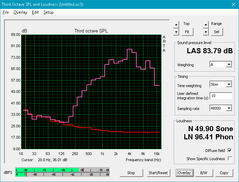
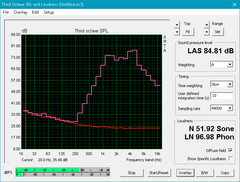
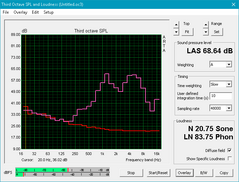
Huawei Honor 7X audio analysis
(±) | speaker loudness is average but good (78.7 dB)
Bass 100 - 315 Hz
(-) | nearly no bass - on average 26.3% lower than median
(±) | linearity of bass is average (8.5% delta to prev. frequency)
Mids 400 - 2000 Hz
(±) | higher mids - on average 6.1% higher than median
(±) | linearity of mids is average (9.3% delta to prev. frequency)
Highs 2 - 16 kHz
(±) | higher highs - on average 11.5% higher than median
(±) | linearity of highs is average (11.1% delta to prev. frequency)
Overall 100 - 16.000 Hz
(-) | overall sound is not linear (34.9% difference to median)
Compared to same class
» 82% of all tested devices in this class were better, 1% similar, 17% worse
» The best had a delta of 12%, average was 38%, worst was 134%
Compared to all devices tested
» 92% of all tested devices were better, 1% similar, 7% worse
» The best had a delta of 4%, average was 25%, worst was 134%
Apple MacBook 12 (Early 2016) 1.1 GHz audio analysis
(+) | speakers can play relatively loud (83.6 dB)
Bass 100 - 315 Hz
(±) | reduced bass - on average 11.3% lower than median
(±) | linearity of bass is average (14.2% delta to prev. frequency)
Mids 400 - 2000 Hz
(+) | balanced mids - only 2.4% away from median
(+) | mids are linear (5.5% delta to prev. frequency)
Highs 2 - 16 kHz
(+) | balanced highs - only 2% away from median
(+) | highs are linear (4.5% delta to prev. frequency)
Overall 100 - 16.000 Hz
(+) | overall sound is linear (10.2% difference to median)
Compared to same class
» 5% of all tested devices in this class were better, 2% similar, 93% worse
» The best had a delta of 5%, average was 19%, worst was 53%
Compared to all devices tested
» 3% of all tested devices were better, 1% similar, 96% worse
» The best had a delta of 4%, average was 25%, worst was 134%
Frequency Comparison (Checkbox selectable!)
Graph 1: Pink Noise 100% Vol.; Graph 2: Audio off
Energy Management
Power Consumption
The system demands anywhere between 1 W when idling on the lowest brightness setting to 6 W when running benchmark loads at maximum brightness. The backlight alone is responsible for drawing about 1.3 W between the 0 percent and 100 percent setting while the CPU is responsible for about 3.8 W between idling and maximum utilization. The older Honor 6X is still a bit more efficient than the 7X likely due to its smaller size and resolution.
| Off / Standby | |
| Idle | |
| Load |
|
| Huawei Honor 7X Kirin 659, Mali-T830 MP2, 32 GB eMMC Flash, IPS, 2160x1080, 5.93 | Apple iPhone X A11 Bionic, A11 Bionic GPU, 64 GB eMMC Flash, Super AMOLED, 2436x1125, 5.80 | Huawei Mate 10 Pro Kirin 970, Mali-G72 MP12, 128 GB UFS 2.1 Flash, OLED, 2160x1080, 6.00 | Honor 7 Kirin 935, Mali-T628 MP4, 64 GB eMMC Flash, IPS, 1920x1080, 5.20 | Motorola Moto G5s 430, Adreno 505, 32 GB eMMC Flash, IPS, 1920x1080, 5.20 | Honor 6X Kirin 655, Mali-T830 MP2, 32 GB eMMC Flash, IPS, 1920x1080, 5.50 | |
|---|---|---|---|---|---|---|
| Power Consumption | 3% | 16% | -35% | 17% | 19% | |
| Idle Minimum * | 1.02 | 1.03 -1% | 0.85 17% | 1.7 -67% | 0.67 34% | 0.82 20% |
| Idle Average * | 2.46 | 2.4 2% | 1.15 53% | 2.9 -18% | 1.4 43% | 2 19% |
| Idle Maximum * | 2.51 | 2.6 -4% | 1.23 51% | 3.3 -31% | 1.52 39% | 2.03 19% |
| Load Average * | 4.16 | 2.96 29% | 4.12 1% | 4.9 -18% | 4.56 -10% | 3.34 20% |
| Load Maximum * | 5.87 | 6.6 -12% | 8.42 -43% | 8.2 -40% | 7.05 -20% | 4.92 16% |
* ... smaller is better
Battery Life
The model is equipped with a similar 3340 mAh battery pack as on the Honor 6X. Unfortunately, runtimes are significantly shorter on the Honor 7X when subjected to similar conditions. Our WLAN test, for example, lasts for 11 hours on the Honor 7X while the Honor 6X is able to reach almost 16 hours. We're not sure what background activity may be responsible for the truncated battery life compared to the previous generation. Nonetheless, 11 hours of real-world WiFi use is respectable and comparable to the iPhone X or Honor 7.
Charging from empty to full capacity is slow. When using the provided 5 V/2 A adapter and micro-USB cable, a full charge will take between 2 and 2.5 hours. Needless to say, Quick Charge is not supported.
| Huawei Honor 7X Kirin 659, Mali-T830 MP2, Wh | Apple iPhone X A11 Bionic, A11 Bionic GPU, Wh | Huawei Mate 10 Pro Kirin 970, Mali-G72 MP12, 15.3 Wh | Honor 7 Kirin 935, Mali-T628 MP4, 12 Wh | Motorola Moto G5s 430, Adreno 505, 11.4 Wh | Honor 6X Kirin 655, Mali-T830 MP2, Wh | |
|---|---|---|---|---|---|---|
| Battery Runtime | -3% | 60% | -9% | 1% | 78% | |
| Reader / Idle | 1111 | 1292 16% | 1744 57% | 888 -20% | 1233 11% | 2250 103% |
| WiFi v1.3 | 664 | 564 -15% | 818 23% | 484 -27% | 518 -22% | 957 44% |
| Load | 199 | 180 -10% | 398 100% | 241 21% | 225 13% | 375 88% |
Pros
Cons
Verdict
Android smartphones in the $200 to $250 USD range are quite common from Chinese manufacturers like Leagoo, Xiaomi, Bluboo, Oppo, and Vivo. What makes the Honor 7X so special compared to the deluge of other cheap alternatives is the harder worldwide marketing push from Huawei. Unlike most other smartphones from the aforementioned brands, the Honor 7X is actually compatible with 4G LTE networks in the US, is more widely available with no importing required, and has the financial backing of the largest Chinese smartphone manufacturer. Together, these advantages create a higher level of quality control that owners outside of Asia do not usually receive from lesser-known Chinese brands. The Huawei is much less of a gamble for the small investment.
There is tremendous value in the Honor 7X. Its small asking price nets users a 5.93-inch FHD display with the same 18:9 aspect ratio found on the latest flagships almost 5x the cost. Its fingerprint reader, dual 4G SIM slots, expandable storage, and 3.5 mm audio jack are features that even some costlier alternatives do not carry. The very slim form factor is another surprise as it looks similar to the expensive Mate 10 Pro down to the dimensions and placement of the buttons and ports. The end result is a smartphone that feels more expensive than its retail price.
Some corners had to be cut, though they thankfully seem limited to extraneous features rather than hardware quality. Owners will be missing out on NFC, IR, 802.11ac, Wi-Fi calling, wireless charging, and USB Type-C while some specific EMUI features are omitted including Hotspot and Navigation Dock. From this perspective, the barebones experience is not unexpected and will not likely dissuade the target budget-conscious audience.
More disappointing are the slower display response times, lack of Quick Charge, and the minimal raw performance benefits of the Kirin 659 over the Kirin 655 in the Honor 6X. Ghosting is more prevalent when browsing and the 2+ hour charge time can be a pain for heavy users. The Honor 7X doesn't necessarily feel any slower or faster than its immediate predecessor for better or worse. Higher quality cameras, a louder earpiece, and a potentially brighter backlight round up our list of what we'd like to see on the eventual successor.
The Honor 7X is being referred to by many in the press as the best Android smartphone $200 can buy and we can't disagree. North American users in particular will be hard press to find an Android smartphone this cheap with an equivalent set of features without resorting to hit-or-miss imports. We're hoping that future iterations will address the noticeable ghosting and slow charging rate without needing to budge the price any higher from its comfortable sweet spot.
Huawei Honor 7X
-
01/09/2018 v6(old)
Allen Ngo, Daniel Schmidt


 Deutsch
Deutsch English
English Español
Español Français
Français Italiano
Italiano Nederlands
Nederlands Polski
Polski Português
Português Русский
Русский Türkçe
Türkçe Svenska
Svenska Chinese
Chinese Magyar
Magyar